Haida Canoe Unfinished
Another interesting thing to look at in Rose Harbour is found in the woods behind the houses. This is an unfinished Haida canoe, left to rot probably 125 or 150 years ago. Haida canoes are made from Western Redcedar logs, which were felled and segmented to the right length and then split in half. Sometimes two canoes could be made from the same log segment. Typically the bottom is shaped first and then they are rolled upright and the inside hollowed out. Once shaped properly they are steamed and the sides are stretched open wide so that they have the appropriate shape to reduce rolling and otherwise increase seaworthiness.
For some insight into Haida canoe making, this article makes an interesting read. For more general information on aboriginal canoe manufacture on the Northwest Coast check out this blog post and this one. In this blog post about making a spruce dugout, Quentin Mackie, one of the leaders of the Kilgii Gwaay project, points out that the technology to make dugout canoes exists at the Kilgii Gwaay site, and even though cedar was not yet present in the area when it was occupied, spruce was. The presence of wedges and wood chips from adzes or chisels at Kilgii Gwaay would suggest that making a canoe like this one might have been done in this area 10,700 years ago, and thousands more times since then.
While some people have hypothesized that this might be the work of bored whaling station workers, it has every sign of being a Haida manufactured canoe. Gwaliga, pictured in some of these photos, comes from a Haida carving family and is a carver too. He explained to us how the bottom is shaped so that when the canoe is steamed open the bottom takes on the correct shape for a finished canoe. This is a very sophisticated technique and would not likely have been known to whaling station workers. On this canoe, which was not completely dug out, the bottom has the right shape to allow steaming it open. In addition, the bow is shaped into the classic form for Haida canoes. So, there is no doubt in our minds it is of Haida manufacture.
One can only speculate about why this canoe was not finished. Perhaps a fatal flaw developed, like a major split. Or maybe a weakness was recognised in the wood that would make the canoe prone to splitting open during use. Possibly the maker died or moved away before it was finished.
Canoes left in the woods are quite rare, but they are found from time to time. I have seen probably 10 of them over the years in all parts of the coast, and indeed in the interior too made of cottonwood or similar species. All the coastal ones are of Redcedar. If these features are older than AD1846, or are part of a site that has some features older than 1846, then they are automatically protected by provincial law. Therefore, archaeologists spend a lot of time in the forests looking for these kinds of features, and other signs of aboriginal forest use such as bark stripped trees (for bark planks and weaving into baskets, clothing, ropes and so on), trees with wood planks split right out of them (for houses), cambium stripped trees (for food, usually hemlock or pine, sometimes spruce for pitch collection), stumps and log remnants (for houses, canoes, poles and other large projects) and so on.
Collectively these are known as culturally modified trees and hundreds of thousands of them have been documented in British Columbia in the past 30 years, and especially the last 15 years since the legislation was changed to protect them. Protection does not necessarily mean preservation in the forest; it does mean that permits are required and that through that system, data must be collected on their types and ages and locations. This is a form of preservation by record before logging or other development takes place. You can find out more about culturally modified trees here (warning – that link is to a large pdf file that takes some time to download).
To see larger views click on any thumbnail below and use the arrows to navigate and escape to return to this page.
- Looking from canoe towards Rose Harbour
- Tansy trying out the canoe for size
- Tansy inspecting the bow of the canoe.
- Gwaliga at the shaped bow
- Gwaliga inspecting the way the bow is shaped, stump from felling the tree visible in background
- Gwaliga inspecting the canoe
- Gwaliga inspecting the bow
- Looking along the length of the canoe from bow to stern.
.
For other views of this canoe, see Tansy trying it out for size at the Quimper Hittys post called Archaeology.
This link catalogues my posts about volunteering on the Kilgii Gwaay archaeological site project.
Canon 5Dii, Nikkor-N 24mm/f2.8 lens. ISO1250, EXIF data in the gallery view is incorrect for aperture as the camera cannot record it for the adapted manual lens.












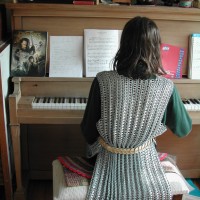

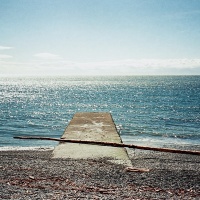
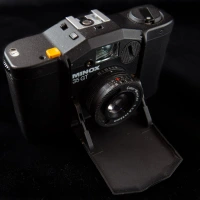
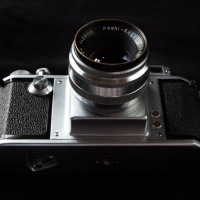
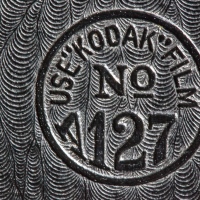
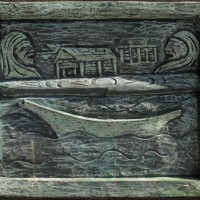


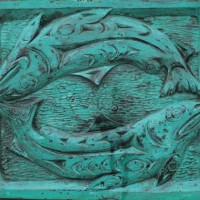

Gorgeous saturated greens – is moss the kudzu of the PNW? Such an evocative subject; there must be a great novel in there somewhere 🙂
LikeLike
Hi Lynn – I had to look up kudzu to see what it is. Actually, I would not classify moss as a noxious weed, and there are dozens of species around here. It occurs everywhere in Haida Gwaii – the trees are dripping with it, the ground is covered, its all over. But, it is wonderful too – soft and variegated and it catches water and slows rain on its way to streams buffering floods and is full of all kinds of life. I don’t think it grows in a way to kill things, but co-exists with them. We even found some preserved in the site, which is pretty cool.
LikeLike
Actually, I love moss and it grows here but not in the profuse way that your photos show. It is beautiful and interesting that it catches and filters the water. I remember as a kid at summer camp, a spring fed stream coming down the mountainside lined with moss – everyone took their drinking water from it and now I can imagine that the moss worked as a filter for that as well.
LikeLike
Profuse is a good word for it. It is wonderfully soft, but it does retain water too so it can be hard to find a dry place to sit days after the last rainfall. I can’t imagine this place without it.
LikeLike
Incredible! I remember as a kid the excitement we felt when we’d encounter the occasional stone arrowhead. This must have been spectacular. Great photographs.
LikeLike
It really is different scale of things from an arrowhead to a canoe. Cedar archaeology tends to be on a large scale which is pretty cool. The pictures I showed of SGang Gwaay a week or so ago are another example. Not only the poles, but the house features and so on. I have more pictures from there that I will be posting in the next little while and they show some awfully big house features which are also a real blast to rediscover in a village the exact location of which no one was certain. I love that part of archaeology.
LikeLike
That’s so amazing. I’ll look forward to those. And yes – the scale is superb.
LikeLike
I am astonished with this post! I literally sat here for moments on end, taking each frame in fully and trying to take in the full scope of the backstory. I can’t even begin to get my head around the notion of canoe manufacturing happening 10,000+ years ago, much less the engineering involved in doing it today! I just love your work, my friend, it’s both highly educational as well as utterly fascinating.
LikeLike
Hi Toad. They must have had some kind of canoes or similar watercraft 10 to 11,000 years ago. We know from the animal bones at the site that they were hunting far off shore, and fishing in deep waters. Besides which, you can’t go anywhere up here without a boat. Given that there was no cedar then, it makes sense that they were either making dug out canoes from other species of log, or they were were making skin covered boats like the kayak and umiak of more recent times which require very little wood, but do need substantial skins. That is one possible explanation for why they were more focused on bear hunting in the early period than more recently – they might have needed the skins for boats (especially since there were no deer, elk, moose, etc and the caribou seem to have been concentrated at that the other end of Haida Gwaii which has more and flatter lands). It is the fun part of archaeology, to speculate about these kinds of things, and to find ways of testing the ideas that come from such speculation. Writing this I was thinking – is there a correlation between the reduction in emphasis on bear hunting in sites and the increase in availability of cedar? I don’t think there is quite enough data about bear use yet to see, but that might be one way of exploring that idea.
LikeLike
Really incredible information here, I had no idea about any of this! What a fabulous place this must have been 11,000 years ago, so peaceful and beautiful. Living near the water would have provided a lifetime of adventure and beauty to take in. Now that you mention the bit about the cedar trees, I have a follow-up question.. when did cedar arrive on the island and how?
LikeLike
Cedar arrived on Haida Gwaii, or at least was established enough to show up in some pollen cores from lake sediments, between about 5500 and 6500 years ago. How it arrived I am not sure – I suppose that cones must have floated in and become established along shorelines and spread from there. Cedar is still moving northward as climate warms – up the north end of the Alaska Panhandle. I can’t remember the dates for cedar being established on southern to northern Vancouver Island, but I think at the south end it was a couple of thousand years earlier than in Haida Gwaii.
LikeLike
Interesting discovery…and photos. I was thinking that your photos from this trip would make an interesting portfolio for a Museum or Park to archive for future generations. Any thoughts?
LikeLike
Hi Ken,
Normally the pictures I take go into the park collections, especially the more technical ones. Only obstacle to that this time is that their archaeology program has been cut to nearly nothing in the latest budget and there may not be anyone to catalogue them after the end of the summer. That would likely mean that they are culled for just the most pertinent ones to the project, not even sure about that though. Lots of uncertainty right now.
LikeLike
So interesting.. thanks
LikeLike
Thanks Helen!
LikeLike